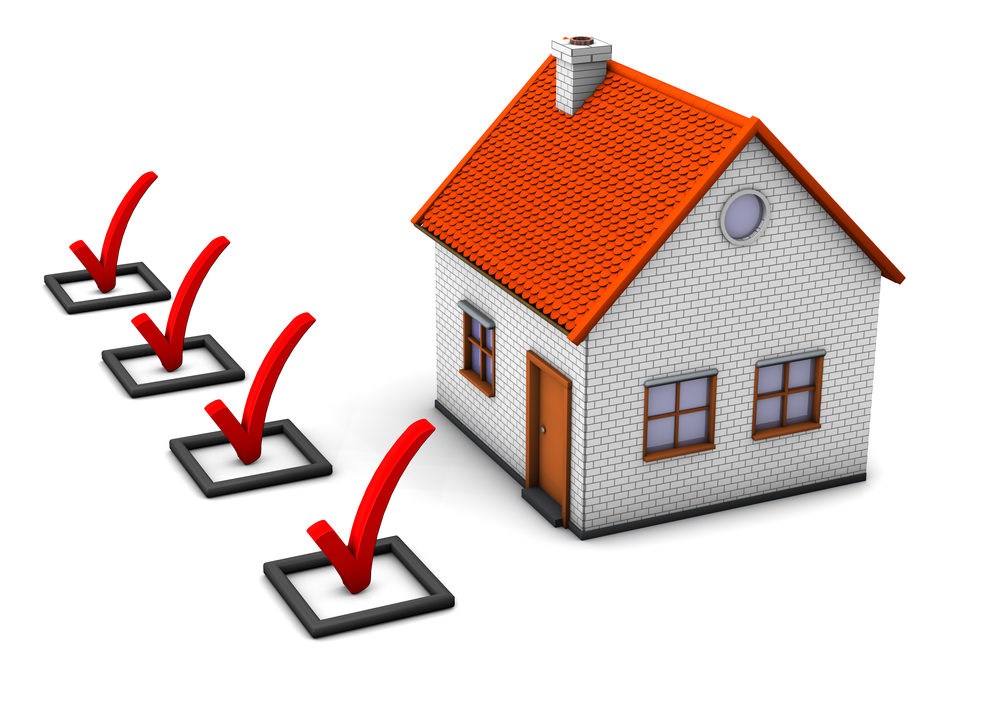Deciding between a second mortgage and a HELOC can be tricky.
After all, both options allow you to tap into your home’s equity for cash.
If you’re wondering whether a second mortgage or HELOC is a smart decision for you, you’ve come to the right place. This article will guide you through understanding each option, their pros and cons, and how they fit into different financial situations.
Without further ado, let’s dive right in!
Key Takeaways
- A second mortgage gives you a lump sum of money with a fixed interest rate, which is great for big expenses but increases your monthly financial obligations.
- HELOCs provide flexible access to funds, allowing you to borrow what you need when you need it and only pay interest on that amount. Their variable rates can lead to unexpected costs.
- Choosing between a second mortgage and a HELOC depends on your specific financial needs: large one-time costs might lean toward a second mortgage while ongoing or uncertain expenses could benefit from the flexibility of a HELOC.
- Both options require using your home as collateral, meaning failure to repay the loan could put you at risk of losing your home.
- Consider factors like current financial standing, future income potential, interest rates, and terms before deciding; what works best for one person may not be ideal for another.
What is a second mortgage?
A second mortgage is a loan you take out against your home’s value on top of your first mortgage.
Simply put, second mortgages allow homeowners to borrow money using their home equity as collateral. This type of loan typically has a fixed interest rate and provides a lump sum of money you can use for various purposes.
With this kind of mortgage, you make monthly payments separate from your primary mortgage payment. The amount you can borrow depends on several factors, including the equity in your home and your credit score.
It’s important to note that if you fail to repay the loan, you risk losing your home since it serves as security for the loan. This financing option opens up opportunities but demands careful consideration due to its secured nature by property ownership.
What is a HELOC?
A HELOC, or home equity line of credit, allows you to borrow money against the equity in your home. Think of it like a credit card; you have a certain limit and can draw funds as needed during the “draw period.” You only pay interest on the amount you use, not the total credit line, and interest rates typically fluctuate with market trends.
HELOCs offer flexibility because you decide when and how much to borrow up to your limit. Repayment kicks in after the draw period ends, generally allowing for either lump sum or monthly payments over a set term.
For homeowners looking at second mortgage vs. HELOC options, this flexibility makes a HELOC appealing for managing cash flow or tackling projects that don’t have fixed costs upfront.
Second mortgage vs. HELOC: Pros and cons
Now that we’ve explored what a HELOC is, let’s dive into comparing second mortgages and HELOCs, focusing on their pros and cons to help you make an informed decision.
| Second Mortgage | HELOC | |
| Pros | Fixed interest rates provide stability.Receive funds in a lump sum for large expenses.Interest may be tax-deductible. | Flexible access to funds when needed.Pay interest only on the amount you use.Variable interest rates can lead to lower costs when rates are low. |
| Cons | Higher interest rates compared to first mortgages.Fixed payments add to monthly financial obligations.Costly closing fees and potential for foreclosure. | Variable rates can increase borrowing costs unexpectedly.Easy access to funds can lead to overspending.Requirement to pay back the principal can be a financial strain. |
When should you take out a second mortgage?
Consider a second mortgage when you’re in the market for a new home, need to fund home improvement projects, or want to consolidate high-interest debts. This financial vehicle can also be used for large one-time expenses like education costs or starting a business.
Buying a new home
If you are considering buying a new home, both a second mortgage and a HELOC can help finance the purchase. With a second mortgage, you can receive funds as a lump sum to cover part of the down payment or additional closing costs.
On the other hand, with a HELOC, you have access to a line of credit that allows you to borrow what is needed when it’s needed for various expenses associated with purchasing your new home.
Both options come with their own set of advantages and drawbacks, so it’s important to carefully consider which one aligns best with your financial situation and goals before moving forward.
Home improvements
If you’re considering making significant home improvements, a HELOC may be a suitable financing option for you. With a HELOC, you can access funds as needed and only pay interest on the amount you borrow.
This flexibility allows you to tackle your home improvement projects at your own pace without being tied to a fixed loan amount from the start.
Additionally, using a HELOC for home improvements could potentially increase the value of your property in the long run, making it a strategic investment for your future. Whether it’s renovating the kitchen, adding an extra bedroom, or enhancing outdoor spaces, utilizing a HELOC can provide the financial means to enhance your living space and boost its resale value.
Paying off debts
To pay off debts, a second mortgage might be suitable if you need a lump sum of money upfront. This option allows you to consolidate high-interest debt into one manageable payment with a fixed interest rate.
You may consider this route if you have significant equity in your home and plan on staying put for an extended period.
Alternatively, a HELOC can also help with debt repayment. It provides flexibility by letting you borrow only what you need when you need it, similar to a credit card. Use it to pay off higher interest debts and then work on paying down the line of credit.
When should you take out a HELOC?
Wondering when it makes sense to take out a HELOC? Let’s take a look.
Consolidating debt
If you have multiple high-interest debts and want to streamline your payments, a HELOC could be a good option for consolidating debt. By using your home equity to secure a line of credit, you can pay off other debts more efficiently.
This allows you to combine all your debts into one monthly payment with a potentially lower interest rate, helping you manage and reduce your overall debt burden.
A second mortgage might also be an option if you’re considering consolidating debt. It provides a lump sum of money that can be used to pay off existing debts or make large purchases.
Covering emergency expenses
In case of an urgent financial need, a HELOC offers the flexibility to access funds quickly. You can use the line of credit to cover unexpected medical expenses or home repairs without needing to apply for a new loan.
This option allows you to tap into your home equity as needed, giving you peace of mind during unforeseen emergencies.
Renovating your home
Renovating your home can be an exciting and rewarding project. If you need funding for renovations, a HELOC could be the right choice.
A HELOC allows you to borrow against the equity in your home to finance improvements. This flexible line of credit gives you access to funds as needed, making it convenient for managing renovation expenses.
With a HELOC, you can tap into your home’s equity and use the funds to make upgrades that will increase its value or enhance your living space. Additionally, by using a HELOC for renovating your home, you may benefit from potential tax advantages on the interest paid on the loan.
Second mortgage vs. HELOC: FAQs
Wondering which option is better for you? Let’s check out some frequently asked questions about second mortgages and HELOCs.
Is a second mortgage better than a HELOC?
When deciding between a second mortgage and a HELOC, it’s essential to weigh the benefits of each option. A second mortgage provides a lump sum of money upfront with a fixed interest rate, making it ideal for large expenses like home renovations or consolidating high-interest debt.
On the other hand, a HELOC offers more flexibility by allowing you to borrow funds as needed up to a certain limit, often with variable interest rates. Consider your financial goals and needs before choosing which option aligns best with your plans.
Considering these factors will help you determine whether a second mortgage or HELOC is better suited to your current financial situation and future aspirations.
What is a cash-out refinance?
A cash-out refinance is when you replace your existing mortgage with a new one for an amount greater than what you currently owe. The difference between the two mortgages is paid out to you in cash, allowing you to use the equity in your home for other financial needs.
This can be a smart way to access funds for things like debt consolidation, home improvements, or major expenses without taking out an additional loan.
By using a cash-out refinance, homeowners can take advantage of their home’s increasing value and potentially lower interest rates. It’s essential to consider the long-term implications and ensure that it aligns with your financial goals before deciding whether this option is right for you.
How does getting a second mortgage work?
When you consider taking out a second mortgage, you are essentially securing another loan using the equity in your home as collateral. The process typically involves applying for a new loan, undergoing credit and income verification, and having your home appraised.
Once approved, the lender will disburse funds to you either as a lump sum or through a line of credit. You’ll then make regular payments toward this additional loan on top of your primary mortgage.
It’s important to understand that getting a second mortgage means taking on more debt and increasing your financial obligations. However, it can be an effective way to access funds for major expenses or investments by leveraging the equity in your property.
Second mortgage vs. HELOC: Which is right for you?
When deciding between a second mortgage and a HELOC, consider your specific financial needs and goals. A second mortgage may be beneficial if you require a lump sum for a large expense like home remodeling or consolidating high-interest debt.
On the other hand, a HELOC offers flexibility by allowing you to access funds as needed up to your approved limit, making it suitable for ongoing expenses or uncertain financial situations.
Consider factors such as interest rates, repayment terms, and potential tax benefits before determining which option aligns best with your objectives.
Evaluate your current financial situation and future plans when choosing between a second mortgage and a HELOC. While both options utilize the equity in your home, they serve different purposes and have distinct features that can impact their suitability for your individual circumstances.
As is the case with any major financial decision, you’re best off talking with a mortgage expert who can help you explore your options to figure out the smartest path forward.
Second mortgage or HELOC: More FAQs
1. What is a second mortgage?
A second mortgage is a loan that lets you borrow money against the value of your home, in addition to your first mortgage.
2. What is a HELOC?
A HELOC is a type of loan that gives you access to funds using your home’s equity as collateral.
3. How do I decide between a second mortgage and a HELOC?
To make the best choice, consider how much money you need and how you prefer to receive it: in one lump sum (second mortgage) or as needed over time (HELOC).
4. Can I use both a second mortgage and a HELOC at the same time?
Yes, it’s possible to have both if you qualify for each based on your home’s equity and your financial situation.
5. Which option typically has lower interest rates, a second mortgage or HELOC?
Second mortgages often have fixed interest rates that might be lower than the variable rates usually offered with HELOCs.
To learn more about whether a second mortgage or HELOC makes sense for your unique financial situation, connect with a mortgage expert.
Disclaimer:
The content provided on this website is offered for educational purposes only. While we endeavor to provide accurate and up-to-date information, we make no representations or warranties of any kind, express or implied, about the completeness, accuracy, reliability, suitability, or availability of the content for any purpose. Visitors are advised to consult with qualified experts before making any financial decisions or taking any actions based on the information provided on this website.







